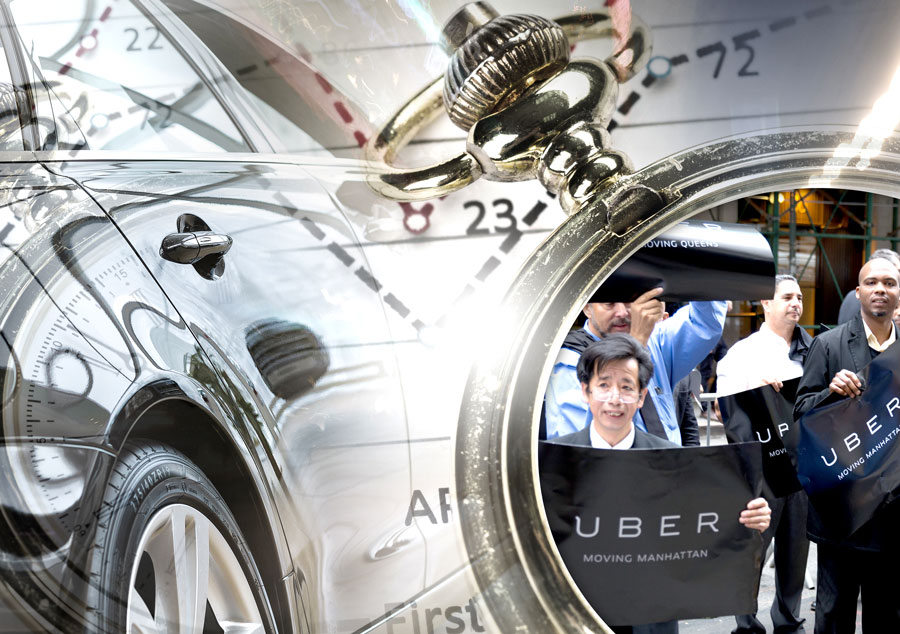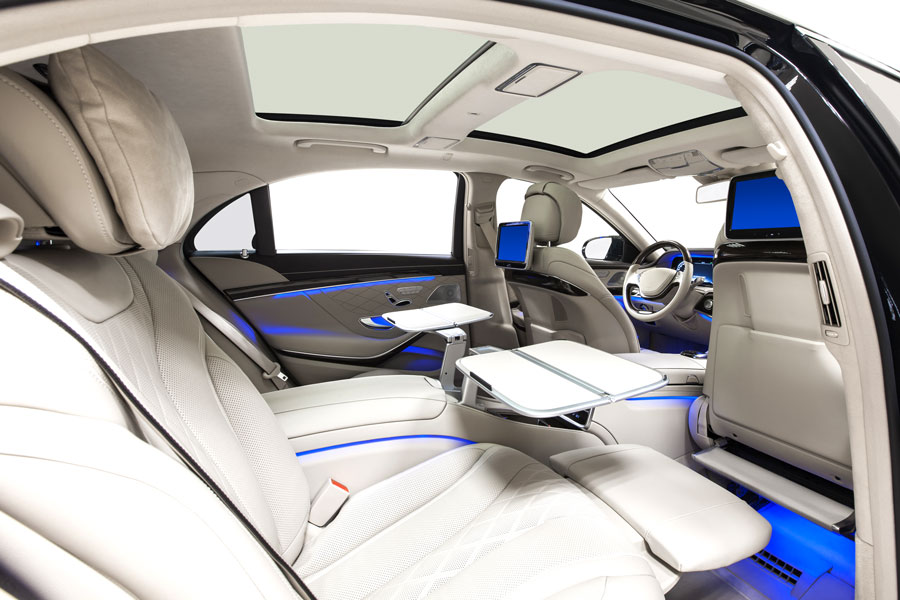By Kristen Carroll
 Ever since the birth of Uber, disruption has become the darling of the tech industry and venture capital firms. Everybody wants to find that next move that changes the future of their respective industry forever. In popular understanding, disruptive products blow the lid off a once-confined set of services with their out-of-the-box thinking and often tech-friendly solutions.
Ever since the birth of Uber, disruption has become the darling of the tech industry and venture capital firms. Everybody wants to find that next move that changes the future of their respective industry forever. In popular understanding, disruptive products blow the lid off a once-confined set of services with their out-of-the-box thinking and often tech-friendly solutions.
Airbnb’s disruption is often mentioned in the same breath as Uber’s, but would it surprise you to know that Airbnb entered the market a full 13 years after a similar service had been launched as VRBO (Vacation Rental By Owner)? I had been using VRBO for vacation bookings a full 20 years before I booked my first Airbnb in 2015. Did you also know that Uber wasn’t the first ride-hailing app? In 2008, a similar concept was launched as Taxi Magic, and it was no fly-by-night company: Taxi Magic had partnered with Concur and was seeing 30,000 downloads a day upon launch.
If we look at some of the next top disrupters we are hearing about now—WeWork, Houzz, Spotify, Dropbox, Docusign—none of their premises are unique, even in the ultimate delivery of their service or product. As it turns out, being a disrupter isn’t about an idea, or co-opting an idea, or finding a technological solution to an analog problem. Being a disrupter really just means you took an existing service or product and found a way to sell it with so much ingenuity and pizazz that your clients and investors credit you with reinventing the wheel in a way that has already been around for a while.
You know those cars that drive you to the airport and have charging stations, complimentary WiFi, privacy screens, temperature controls ... those are mobile virtual offices ...
 There’s a certain relief in that realization, don’t you think? Uber has been seen as the ultimate disrupter—and it’s essentially just another taxi service. Uber has turned flagging a ride into not only a verb but also a cornerstone of city culture. As they have bought their way past regulations and restrictions, the cheers they once heard from the sidelines have turned to jeers, and they have skidded past the goodwill they once enjoyed into an unlikely demise. The concept existed before and will outlast them, but they squandered their disrupter status as they were rocketing beyond their reasonable potential.
There’s a certain relief in that realization, don’t you think? Uber has been seen as the ultimate disrupter—and it’s essentially just another taxi service. Uber has turned flagging a ride into not only a verb but also a cornerstone of city culture. As they have bought their way past regulations and restrictions, the cheers they once heard from the sidelines have turned to jeers, and they have skidded past the goodwill they once enjoyed into an unlikely demise. The concept existed before and will outlast them, but they squandered their disrupter status as they were rocketing beyond their reasonable potential.
So a disrupter isn’t an idea, it’s not a technology, and it’s not anything that’s original: A disrupter is a bad-ass packaging and marketing initiative that rebrands a banal offering and mesmerizes users into interpreting it as a game-changer rather than an upgrade. In all actuality, the differences can usually be reduced to marketing razzle dazzle. With all that in mind, as we look at our own services we offer in the chauffeured car and livery arena, how can we repackage our current services in a way that will create new demand, draw the attention of different buyers, and remain relevant in an ever-changing world?
1. Mobile Virtual Offices – You know those cars that drive you to the airport and have charging stations, complimentary WiFi, privacy screens, temperature controls, as much quiet or noise as you want, all without a single unwanted interruption? Those aren’t airport transfers or sedan services: They are mobile virtual offices! Suddenly, an expense item becomes a revenue-generating one or a cost of goods sold, depending on the role of the traveler.
2. Executive Transit – Offer daily executive commuter services to large corporations as a VIPerk as well as a way for them to get some additional productivity time from their executives when they would normally be driving to work.
3. Mobile Meeting Spaces – A team of board members is heading out for a retreat but they don’t have to wait until they hit the conference room to discuss all matters of business. In your mobile meeting space, they can project their slides onto a screen, set up any AV and recording needs with your team ahead of time, and capture the full attention of the group en route, saving more time for networking and relationship-building once they arrive at their final destination.
4. VIP Lounge on Wheels – What once was known as a limousine or a party bus can transform into a VIP Lounge on Wheels. Bring your own bottle service accoutrements, your own personal DJ in the form of a playlist or an actual DJ (there’s room for either!), set the exclusive guest list, and hold the rope at the gate! The night clubs are fun, but here your clients can create their own perfect evening.
Disrupting your current services isn’t just finding a fun way to repackage them, such as the examples above. It’s also rethinking the way you do business. What are some of the tenets of your company that may be holding you back from finding new clients or staying relevant with current clients?
Hourly minimums that require passengers to pay for your vehicle and chauffeur to sit for hours unutilized.
How can we repackage our current services in a way that will create new demand, draw the attention of different buyers, and remain relevant in an ever-chaning world ...
Remember the days when you could charge $100 or more an hour to drive people to a concert, park your vehicle for the next few hours, and then drive them home? Or how about a couple of friends who wanted a ride to dinner to ensure they had a sober and safe ride home? That was pretty sweet work, but when ride-sharing options became available, the price of your service no longer justified the investment. Sure, if you took an Uber instead of a black car, the ride wasn’t as exclusive and you couldn’t leave your belongings behind, but when you’re comparing $600 to $100, the service delta couldn’t make up for the cost delta.
However, would that same group of people be willing to pay double the Uber price for that exclusive ride, safety, and security and a higher-end overall experience? I believe they would. Uber has opened the door to one-way rides, and for years, we have dug our heels in and stuck to our hourly minimums as the retail business has slipped from our grasp. Why not create a flexible business model that accounts for shorter trips and services and capitalizes on last-minute needs and requests in busier locations, instead of just handing that portion of the market share over to the TNCs? While many companies have moved away from retail and private-use services in the past few years, it’s never a bad idea to keep your wheels moving during the less busy times while continuing to capture one of the more profitable segments of services we have seen. While operators fight over airport transfers that are typically the least profitable service segment, there is still a world of need in the private sector, and part of disrupting your own strategy may be reminding yourself to stay in the game.
Remember the days when you could charge $100 or more an hour to drive people to a concert, park your vehicle for the next few hours, and then drive them home ...
 Base-to-base pricing that punishes customers for your base location, which has nothing to do with their needs.
Base-to-base pricing that punishes customers for your base location, which has nothing to do with their needs.
We are starting to see a few of our clients dip a toe in the mileage-based pricing pool, and it is long overdue. For far too long, we have based pricing on our own needs, rather than the needs of our clients. Each operator should do the work to determine pricing and profitability based on their fixed and variable costs. When service is needed beyond that range, the trip should be outsourced to a trusted partner in that service area that ensures the client is paying a fair and reasonable rate while the trip is still profitable.
Flat pricing models that aren’t tied to usage rates, times of year, times of day, and special events.
We have been preaching the gospel of dynamic pricing for years, yet while every other travel industry incorporates this strategy as a bedrock of their financial performance and health, the chauffeured car industry has not embraced the concept. If your software provider doesn’t allow you to price your trips in the best interests of your organization or your clients, demand they add this function or find a software that does. If you don’t think your clients will embrace the new pricing model, develop a communication plan which shares the benefit of this program with them, and grandfather in rates for clients where the price sensitivity could cost you the long-term account and relationship.
Rigid pricing and payment options that don’t easily allow for users to pay per head for larger vehicles and group events.
Many companies are breaking into the motorcoach business. Having the ability to provide shuttle and event transportation with a price per head model—selling seats rather than the entire vehicle—is a great way to keep your wheels moving.
The possibilities are endless, as the luxury ground transportation industry has been built upon rules and requirements that served us well but have not always met the passenger’s needs. However, as times have changed and options have expanded, your passengers’ needs must be the focus of your services. If changes like the ones above don’t fit well with your current operational model, it may be time to take a look at your operational model to ensure you are flexible, lean, and creative enough to grow and change with a growing and changing industry and society.
Remember: The best way not to fall victim to the next disruption is to disrupt yourself first.
[CD0718]
Kristen Carroll is the Founder of the LMC Group. She can be reached at kristen@lmc.group.

